How To Connect Node App To Mlab
Heroku allows developers to deploy Node.js app with MongoDB as a plugin on their platform. This is a simple tutorial for deploying a similar application using Node.js and MongoDB.
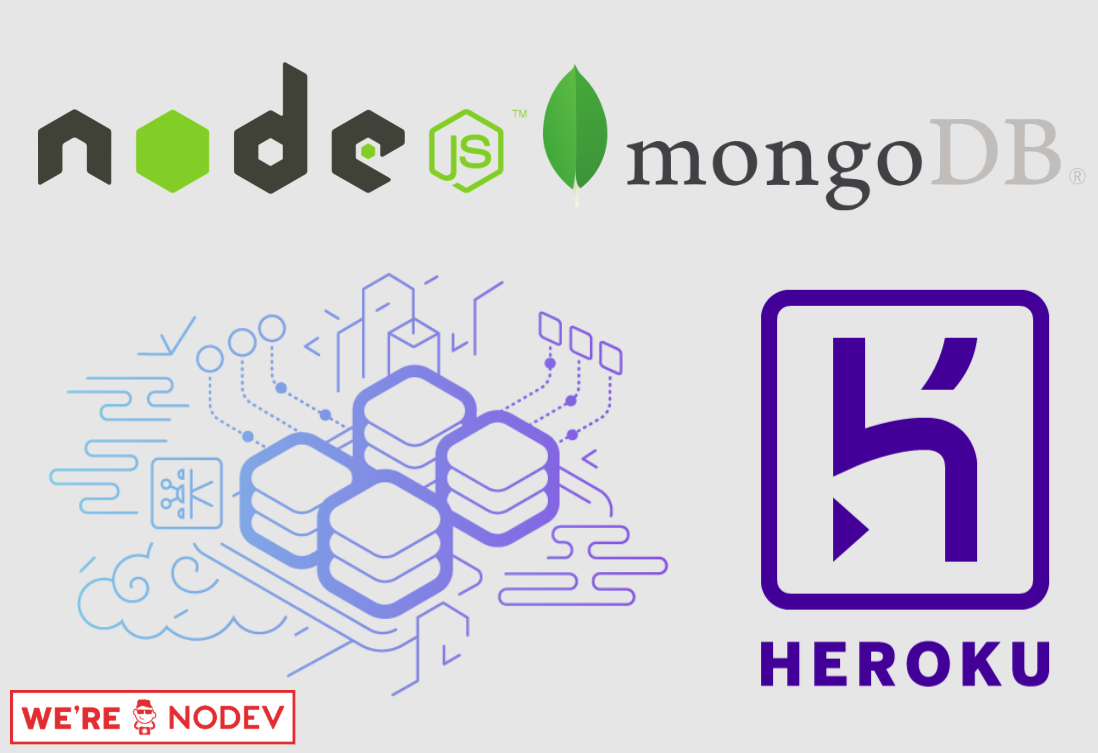
Before we begin the tutorial, I want to say about my OS. I'm using Linux, Ubuntu 16.04.
This is my repository for the tutorial on Github.
1. Working on local machine with Node.js and MongoDB
First, we should work with Node.js and MongoDB on a local machine environment before deploying onto Heroky.
1.1. Quickstart Node.js app with express
Express is a minimal and flexible Node.js web application framework that provides a robust set of features for web and mobile applications. We can use the package to create node.js app fastly.
# Create new directory mkdir tut-heroku-node-mongo cd tut-heroku-node-mongo/ # Initialize node.js by Express with view engine is ejs express --ejs --git # Install packages npm install 1.2. Environment Variables in Node.js with dotenv
Dotenv is a zero-dependency module that loads environment variables from a .env file into process.env. To use environment variables for node.js app, use package dotenv and create file .env for app.
npm install dotenv --save touch .env - Open file
.envand add lines formatedkey=valuewithout spaces, example:
- With
dotenv, now we can access environment variables in file.envbyprocess.env.*. To access effectively and accurately, we create fileconfig.js.
- In file
config.js, we export environment variables to use by following lines:
module.exports = { secretKey : process.env.SECRET_KEY || 'default secret key' } -
We also have to configure package
dotenvby require package inapp.js. -
At the top of file
app.js, add the following lines
// load environment variables in file .env to process.env.* require('dotenv').config(); 1.3. Configure MongoDB database
Now, we'll create new MongoDB database at local to use. This step is very simple. If you're using Linux or MacOS, maybe you will start mongodb by
sudo service mongod start If you're using Window, maybe you will start mongodb by Service Manager.
- Open file
.envto add the values:
URI_MONGO=mongodb://localhost/tut-heroku-node-mongo - We should also export the values in file
config.js:
module.exports = { secretKey : process.env.SECRET_KEY || 'default secret key', uriMongo : process.env.URI_MONGO || 'mongodb://localhost/tut-heroku-node-mongo' } For development, you maybe don't need add file .env because we have default value for URI_MONGO is localhost
1.4. Connect Node.js to MongoDB using mongoose
Mongoose provides a straight-forward, schema-based solution to model your application data. It includes built-in type casting, validation, query building, business logic hooks and more, out of the box. Mongoose is ORM for Node.js with Mongodb
npm install --save mongoose Connecting to mongodb will be done after creating models by mongoose.
1.5. Create database models with mongoose
- Run some commands for initialize models
mkdir models touch index.js touch user.js touch post.js - In file
user.js, create new schema with mongoose:
const mongoose = require('mongoose'); const Schema = mongoose.Schema; const UserSchema = new Schema({ username : { type : String, unique : true }, password : String }); mongoose.model('User', UserSchema); - In file
post.js, create new schema with mongoose:
const mongoose = require('mongoose'); const Schema = mongoose.Schema; const PostSchema = new Schema({ title : String, content : String, user : { type : Schema.Types.ObjectId, ref : 'User' } }); mongoose.model('Post', PostSchema); - In file
index.js, import schema models connect to mongodb.
const fs = require('fs'); const path = require('path'); const mongoose = require('mongoose'); const config = require('../config'); fs.readdirSync(path.join(__dirname, './')).forEach((file) => { if (file.indexOf('index') == - 1) { require(path.join(__dirname, file)); } }); module.exports = new Promise((resolve, reject) => { mongoose.connect(config.uriMongo, (err) => { if (err) return reject(err); console.log('Mongo is connected'); return resolve(); }); }); - In file
app.js, add lines
/// ... var bodyParser = require('body-parser'); require('./models'); var index = require('./routes/index'); /// ... 1.6. Create APIs for models
-
Create file
posts.jsinroutes. -
Edit file
routes/users.jswith:
var express = require('express'); const mongoose = require('mongoose'); const User = mongoose.model('User'); var router = express.Router(); /* GET users listing. */ router.get('/', function (req, res, next) { User.find({}, '-password') .then(data => res.status(200).send(data)) .catch(err => res.status(500).send(err)) }); module.exports = router; - Edit file
routes/posts.jswith:
var express = require('express'); const mongoose = require('mongoose'); const Post = mongoose.model('Post'); var router = express.Router(); /* GET posts listing. */ router.get('/', function (req, res, next) { Post.find().populate('user', '-password').exec() .then(data => res.status(200).send(data)) .catch(err => res.status(500).send(err)) }); module.exports = router; - Edit file
app.jswith:
var index = require('./routes/index'); var users = require('./routes/users'); var posts = require('./routes/posts'); app.use('/', index); app.use('/users', users); app.use('/posts', posts); 1.7. Create scripts for database (drop and fake data)
- To create or drop database quickly, you maybe add some
scripts.
mkdir scripts cd scripts/ touch drop.js touch fake.js - In file
package.json, add scripts
{ "scripts": { "start": "node ./bin/www", "db:fake": "node scripts/fake", "db:drop": "node scripts/drop" } } - Add package
asyncto fake data simpler
- In file
drop.js, edit by
require('dotenv').config(); const mongoose = require('mongoose'); const config = require('../config'); mongoose.connect(config.uriMongo) .then(() => mongoose.connection.db.dropDatabase()) .then(() => { console.log('Drop database OK'); process.exit(0); }) .catch(err => { console.log(err); process.exit(0); }) - In file
fake.js, edit by
require('dotenv').config(); require('../models'); const async = require('async'); const mongoose = require('mongoose'); const User = mongoose.model('User'); const Post = mongoose.model('Post'); const users = []; for (let i = 0; i < 15; i ++) { users.push({ username : 'username_' + i, password : 'password_' + i }); } async.eachSeries(users, (_user, cb) => { const user = new User(_user); user.save().then(user => { const posts = []; const num_posts = Math.floor(Math.random() * 6); for (let i = 0; i < num_posts; i ++) { posts.push({ title : 'Post ' + i + ' of user ' + user.id, content : 'something here', user : user._id }); } async.eachSeries(posts, (_post, cb) => { const post = new Post(_post); post.save().then(post => cb()).catch(err => cb(err)); }, (err) => cb(err)) }) .catch(err => cb(err)) }, (err) => { if (err) { console.log(err); process.exit(0); } console.log('Fake successfully'); process.exit(0); }); - Now we can
fakeordropdata by run
# for drop data npm run db:drop # for fake data npm run db:fake - Edit file
views/index.ejsby add following lines
<p>View list of users: <a href = "/users" target = "_blank" alt = "" >}}/users</a></p> <p>View list of posts: <a href = "/posts" target = "_blank" alt = "" >}}/posts</a></p> - Start server node.js and click 2 url in view to view your data, that will be:
- http://localhost:3000/users
- http://localhost:3000/posts
2. Deploy to Heroku with MongoDB
Now we will use heroku to run our node.js, configure the MongoDB database on heroku and deploy it.
2.1. Add new Heroku application
-
Login or sign up new account on heroku.
-
Go to dashboard heroku and create new app

- Create new app. My app name is
tutorial-node-mongo, therefore, when you can't create new app with similar name, you shold choose another.
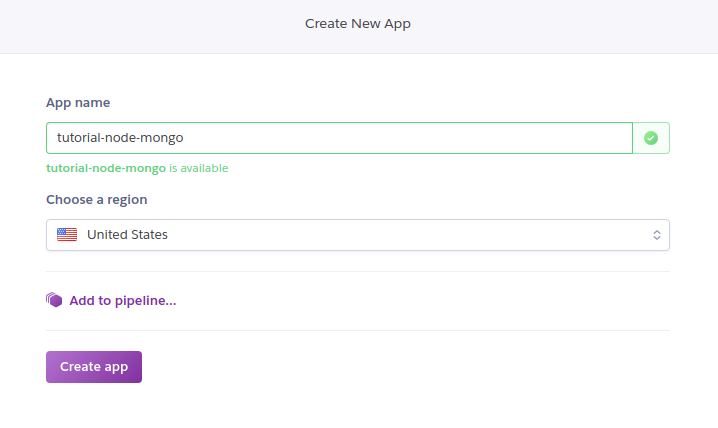
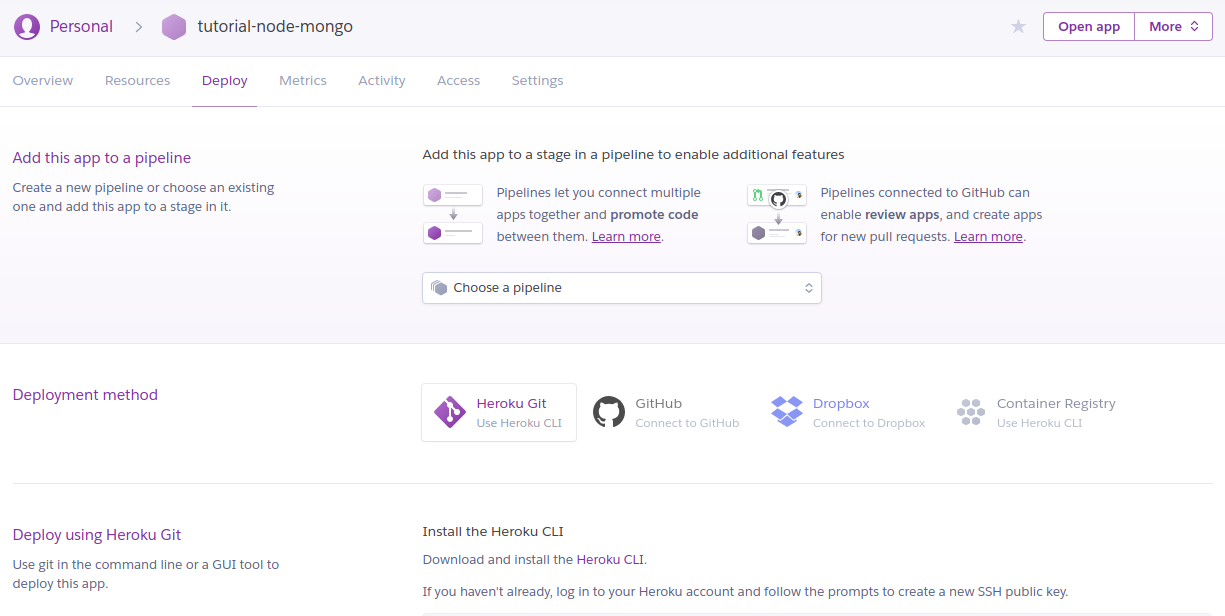
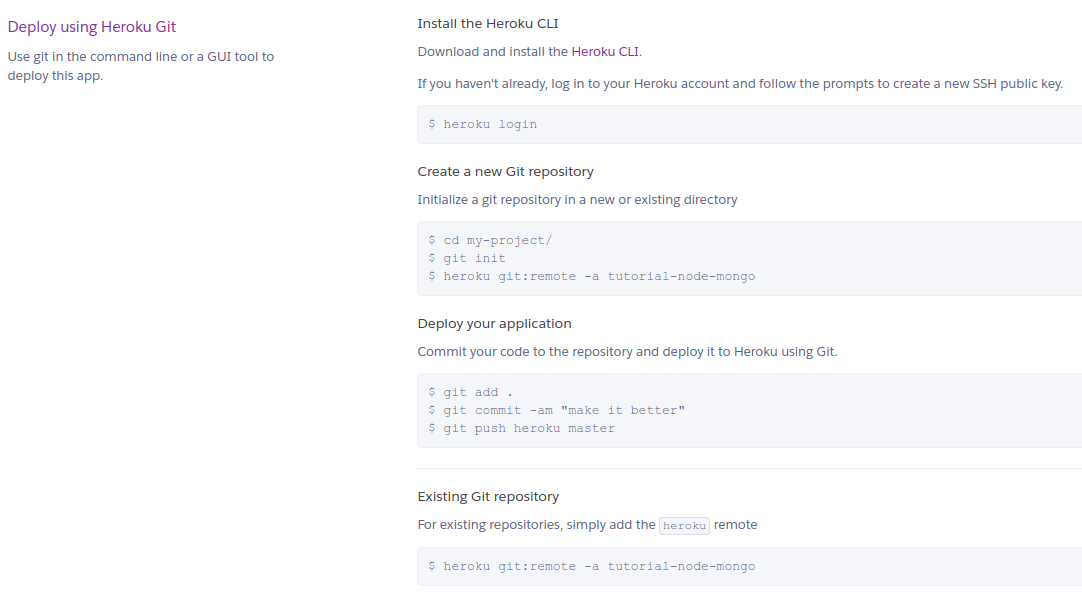
- Next, we will use git for local repository and remote to heroku
heroku login # at your directory git init heroku git:remote -a tutorial-node-mongo # tutorial-node-mongo should you app name - Now, we can use git to deploy to heroku by commit and push. Because your local directory is remote to heroku, so in file
.gitignore, you don't need ignore file.envto deploy environment variables to heroku. Therefore, check your file.gitignore, if it has line.env, you should comment that line before push to heroku. But currently we will not push to heroku because we will configure postgre data on heroku with following instructions
2.2. MongoDB database with mLab
mLab is a fully managed cloud database service featuring automated provisioning and scaling of MongoDB databases, backup and recovery, 24/7 monitoring and alerting, web-based management tools, and expert support. mLab's Database-as-a-Service platform powers hundreds of thousands of databases across AWS, Azure, and Google and allows developers to focus their attention on product development instead of operations.
-
Now we should login or sign up new account on mLab.
-
Next, we'll create new database:
-
Click to button
Create New

- Choose cloud is AWS and plan is SandBox for free
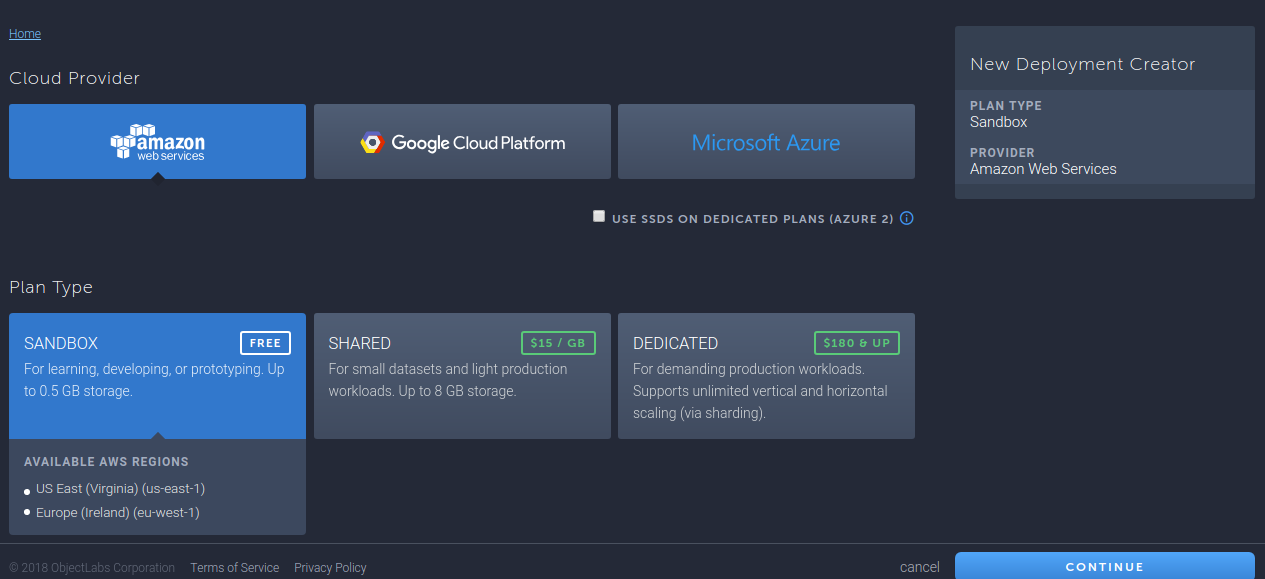
- Choose AWS Region

- Add Database name, I add
tutorial-node-mongo
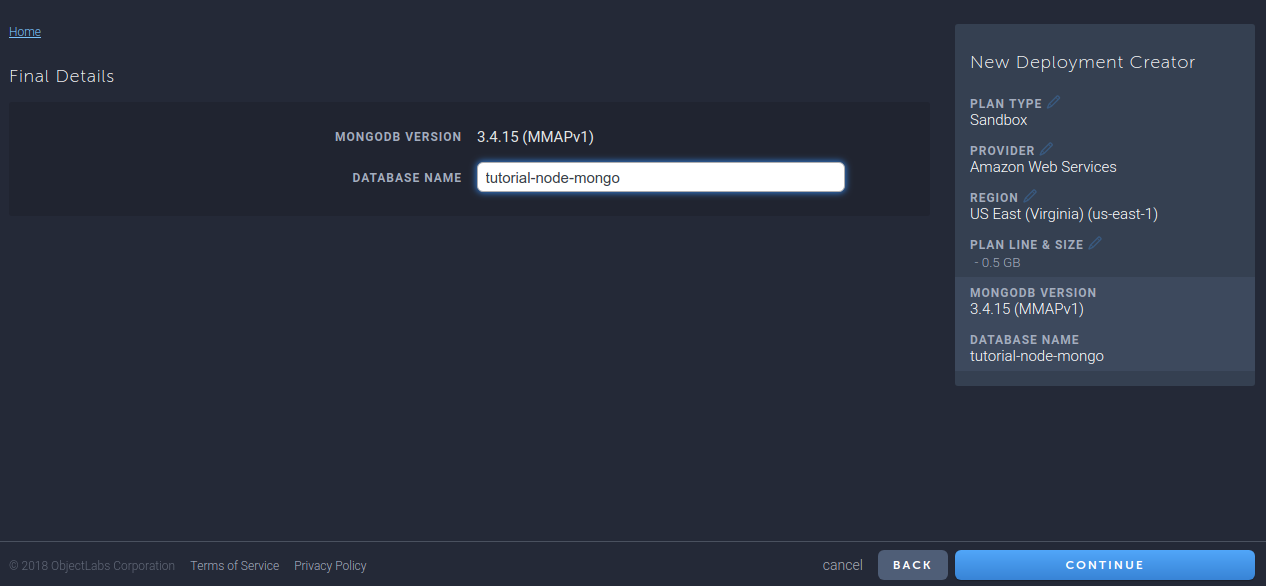
- After new database created, get
MongoDB URIand add new user by click to buttonAdd database user


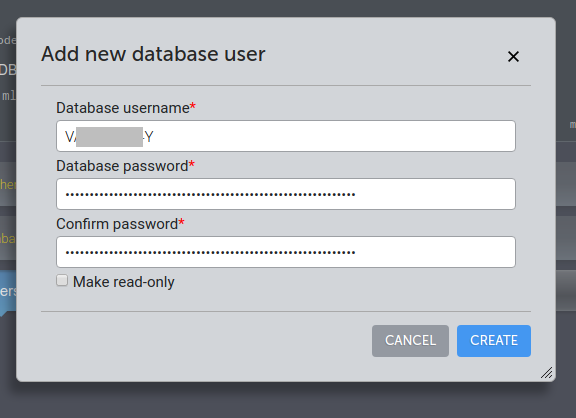
- Edit file
.envwith new value
URI_MONGO=mongodb://<dbuser>:<dbpassword>@ds027345.mlab.com:27345/tutorial-node-mongo Change <dbuser> and <dbpassword> with your user.
-
Test at local whether connect to mLab by
npm start -
Now we can deploy to heroku app by using git commands
# view changes git status # add all changes git add -A git commit -m "deploy new app" # push to remote heroku, branch master git push heroku master - After commit and push to heroku, heroku auto build packages and start your server node.js. After build successfully, you can view your web herokuapp on your browser by
You can see
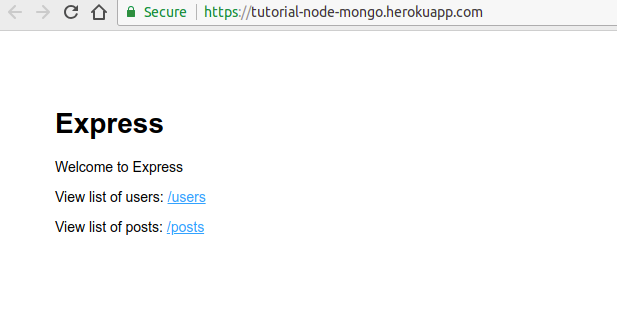
- When click
/usersor/posts, you can't see anything, because your database on heroku don't have any. You should add or fake some in your cloud. Now I will do that in following section.
2.3. Add or fake database on mLab
You can run
2.4. Remote mLab to local with Robo 3T (Robomongo)
Robo 3T Native and cross-platform MongoDB manager, (formerly Robomongo) is the free lightweight GUI for MongoDB enthusiasts. Distributed as a native application, fast and snappy Robo 3T uses very little of your machine resources.
-
Open
Robo 3Tand add new connection by click on menu or useCtrl + N -
Name: optionals, that will be name of connection on UI -
Address: In URI mongodb on mLab, get from@to:, my address isds027345.mlab.comand port is27345
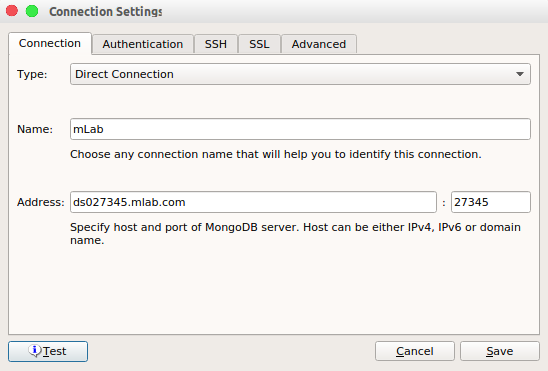
-
Database: that is your database name on mLab, in URI Mongo, that is after/to end. My database istutorial-node-mongo -
UsernameandPasswordis<dbuser>and<dbpassword>in your URI.
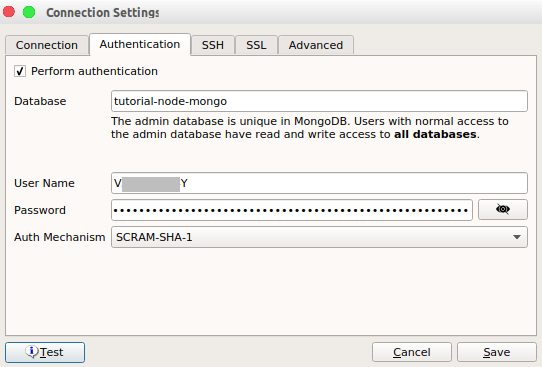
- Next, click
Testbutton to test connection, you will see:
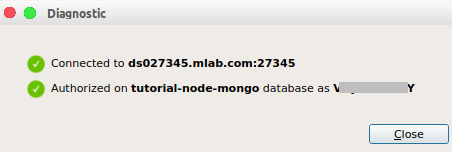
- Now we can manage database from
mLabtoRobo 3T
2.5. Open Heroku App
Open herokuapp, you can see data also available
- This
/users:
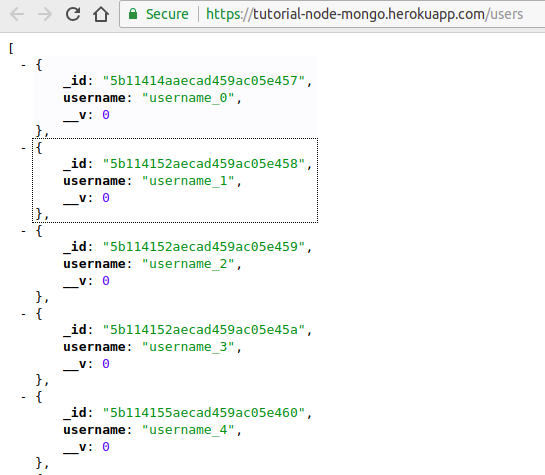
- This is
/posts:
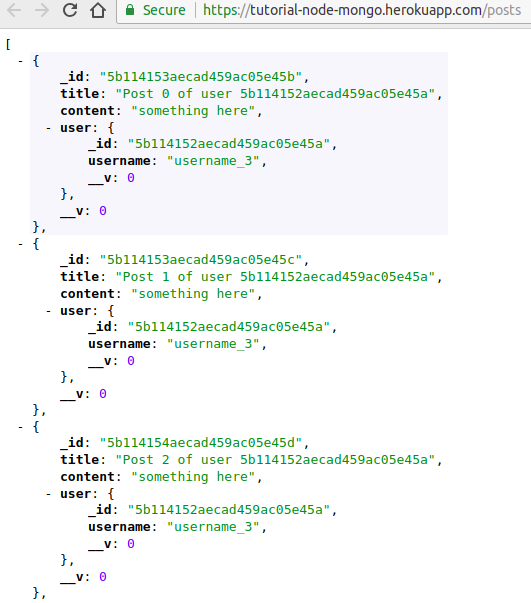
3. Conclusion
I have shown you how to deploy a node.js app to heroku with the MongoDB database on mLab, which uses some packages like express, mongoose, dotenv. You can see my source code for example on this Github Repository.
Thanks for reading my article! If you have any feedback or criticism, feel free to leave any comment!
How To Connect Node App To Mlab
Source: https://wearenodev.github.io/post/tutorial/heroku/deploy-nodejs-with-mongodb-to-heroku-using-mlab/
Posted by: darrorty1962.blogspot.com

0 Response to "How To Connect Node App To Mlab"
Post a Comment